In the figures shown, 1 kg block is stationary while 2 kg block is being pulled with constant speed. The spring is exerting a force of 1N on the block

The coefficient of kinetic friction between both the blocsk is 0.1
if the 2kg block is suddenly stopped, 1 kg block will start moving to the left.
If the floor is smooth, we need to apply a force of 1N on 2 kg block to pull it with constant speed.
The fricition on 2kg block due to 1kg block is in the direction of spring force on 1kg block.
The correct Answer is:ACD
As there is relative motion between blocks kinetic friction is acting
μN=1N
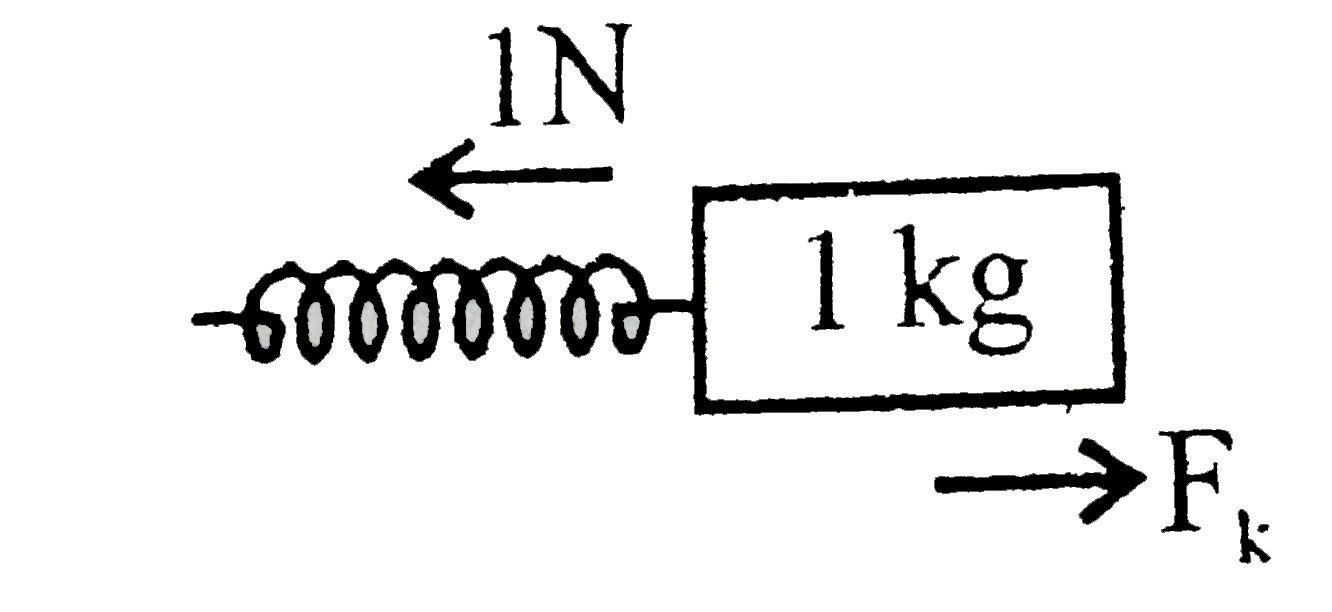
μ×1×10=1
⇒μ=0.1 Fk=1N as block is stationary
If 2 kg block is suddenly stopped
Static friction will act and block is in equilibrium

If floor is smooth
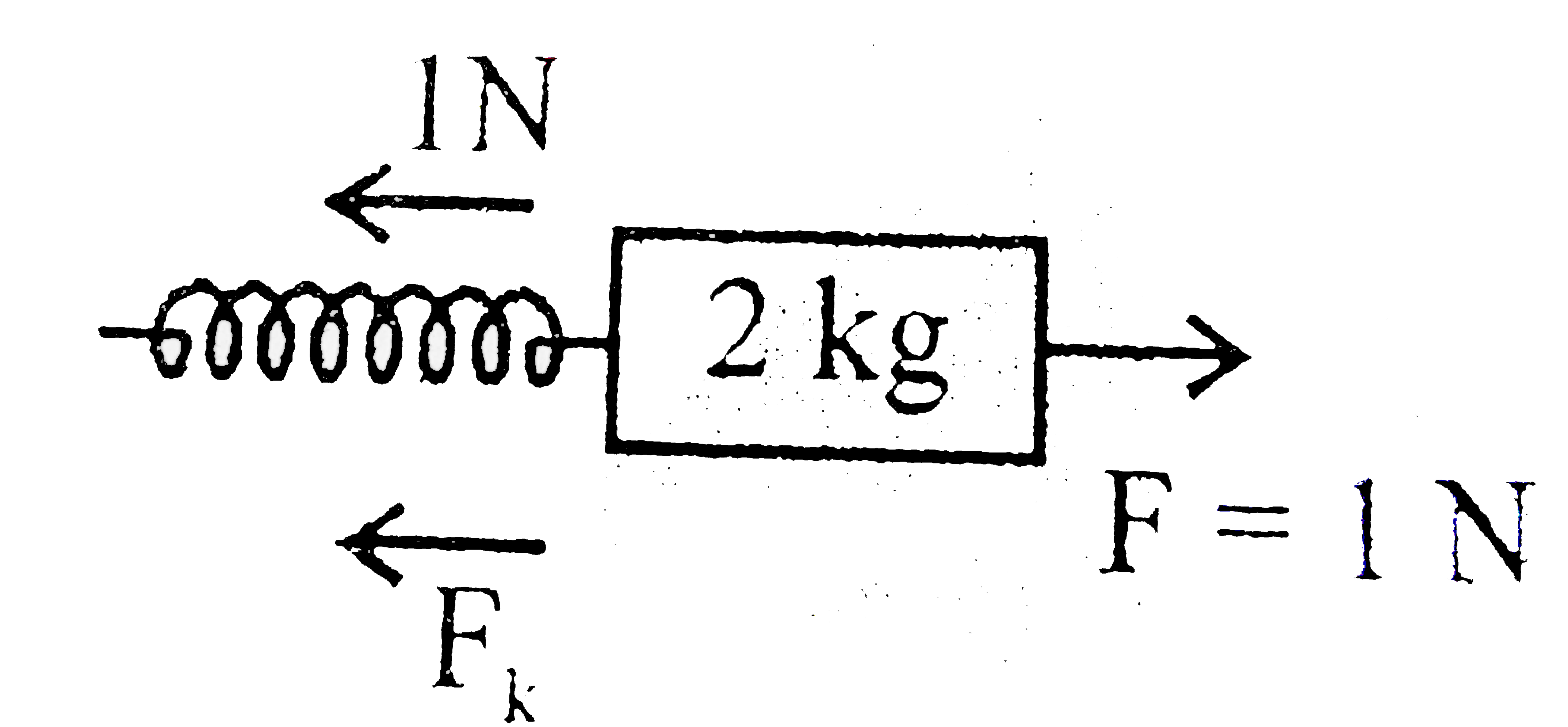
Should be applied
Topper's Solved these Questions
- BOOK - BANSALCHAPTER - TEST PAPERSEXERCISE - PHYSICS PART (A)32videos
TEST PAPERS
- BOOK - BANSALCHAPTER - TEST PAPERSEXERCISE - PHYSICS PART (B)3videos
TEST PAPERS
- BOOK - BANSALCHAPTER - TEST PAPERSEXERCISE - PHYSICS PART- C4videos
TEST PAPERS
- BOOK - BANSALCHAPTER - SEMICONDUCTORSEXERCISE - CBSE Question32videos
SEMICONDUCTORS
Similar Questions
Each of the blocks shown in figure has mass 1 kg. The rear block moves with a speed of 2 m/s towards the front block kept at rest. The spring attached to the front block islight and has a spring constant 50 N/m. find the maximum compression of the spring.
 View Solution
View SolutionA block of mass m, lying on a smooth horizontal surface, is attached to a spring (of negligible mass) of spring constant k. The other end of the spring is fixed, as shown in the figure. The block is initally at rest in its equilibrium position. If now the block is pulled withe a constant force F, the maximum speed of the block is :
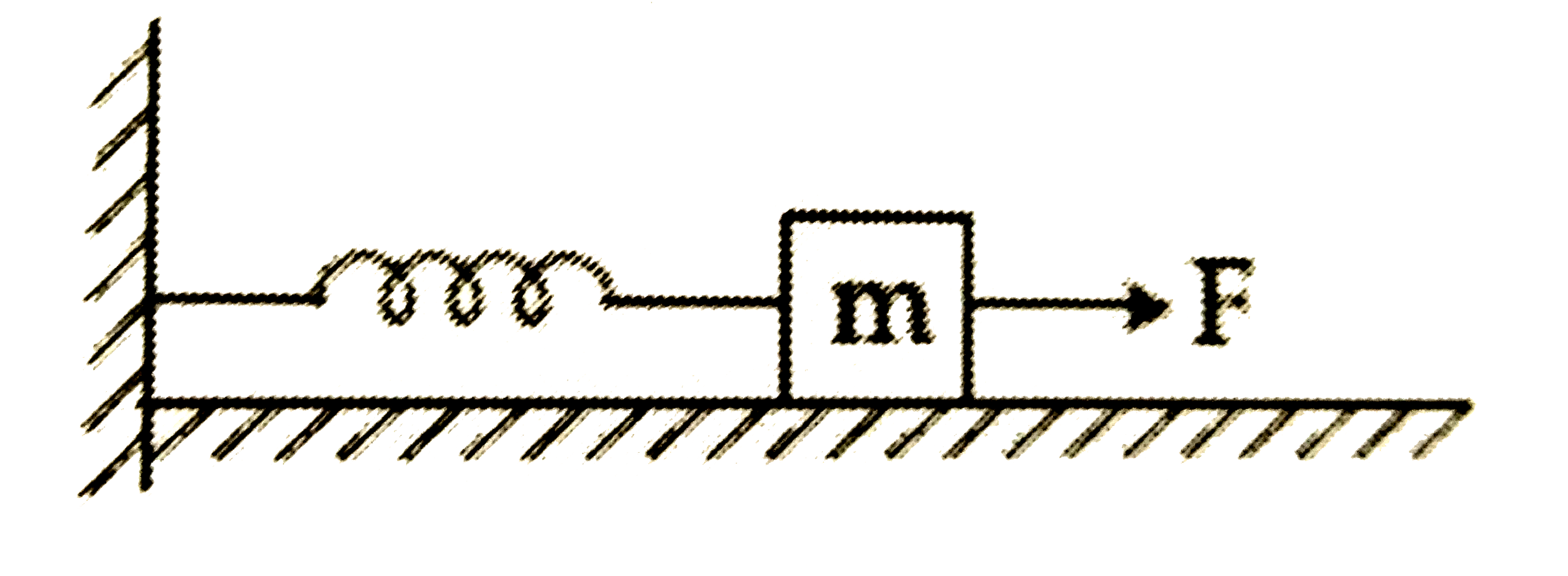 View Solution
View Solution
Knowledge Check
- Question 1 - Select One
In the system shown in the figure, the acceleration of 1 kg block is
 Ag2 downwardsBg2 upwardsCg4 downwardsDg4 upwards
Ag2 downwardsBg2 upwardsCg4 downwardsDg4 upwards - Question 2 - Select One
In the figure shown, block of mass 2 kg is very long. Force of friction on 1 kg block is
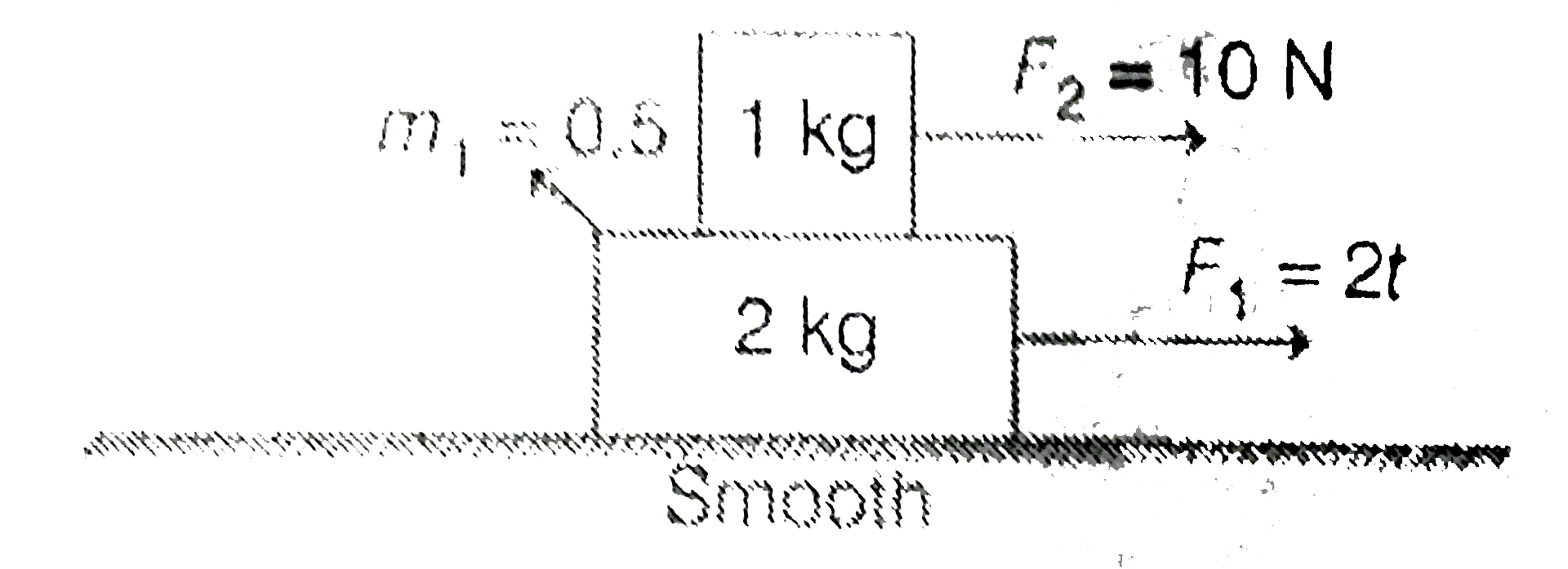 Aalways towards rightBalways towards leftCis first towards right and then towards leftDis first towards left and then towards right
Aalways towards rightBalways towards leftCis first towards right and then towards leftDis first towards left and then towards right - Question 3 - Select One
The figure shown blocks A and B are mass 2 kg and 8 kg and they are connected through strings to a spring connected to ground. The blocks are in equilbrium. (g=10m/s2)
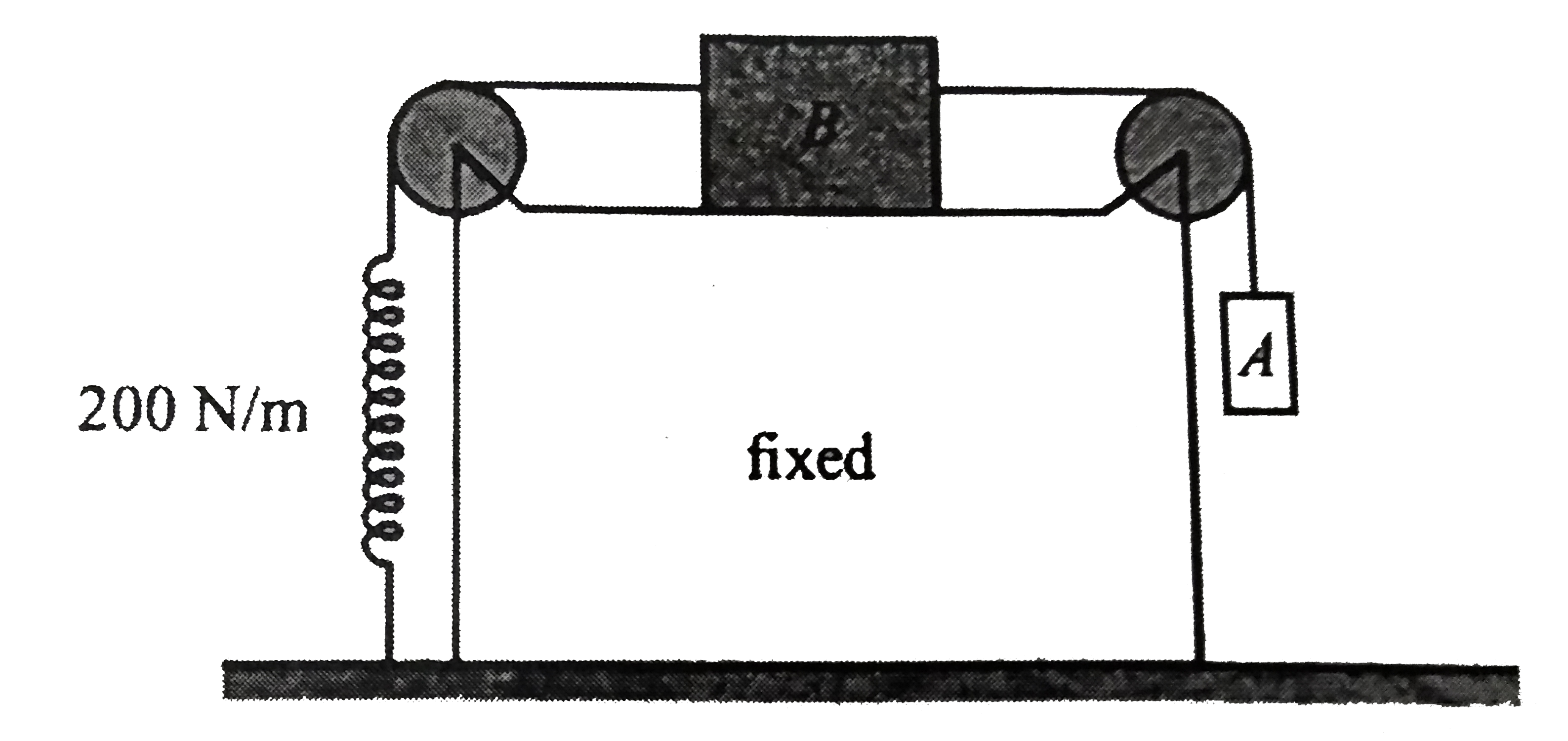
Now the block A is pulled downwards by a force gradually increasing to 20 N. The new elongation of spring is ,-A2 cmB4 cmC20 cmD40 cm
A block of mass m, lying on a smooth horizontal surface, is attached to a spring (of negligible mass) of spring constant k. The other end of the spring is fixed, as shown in the figure. The block is initally at rest in its equilibrium position. If now the block is pulled withe a constant force F, the maximum speed of the block is :
 View Solution
View SolutionA block of mass √3/10kg is placed on a rough horizontal surface as shown in the figure. A force of 1N is applied at one end of the block and the block remains stationary. The normal force exerted by the sruface on the block acts(g=10m/s2)
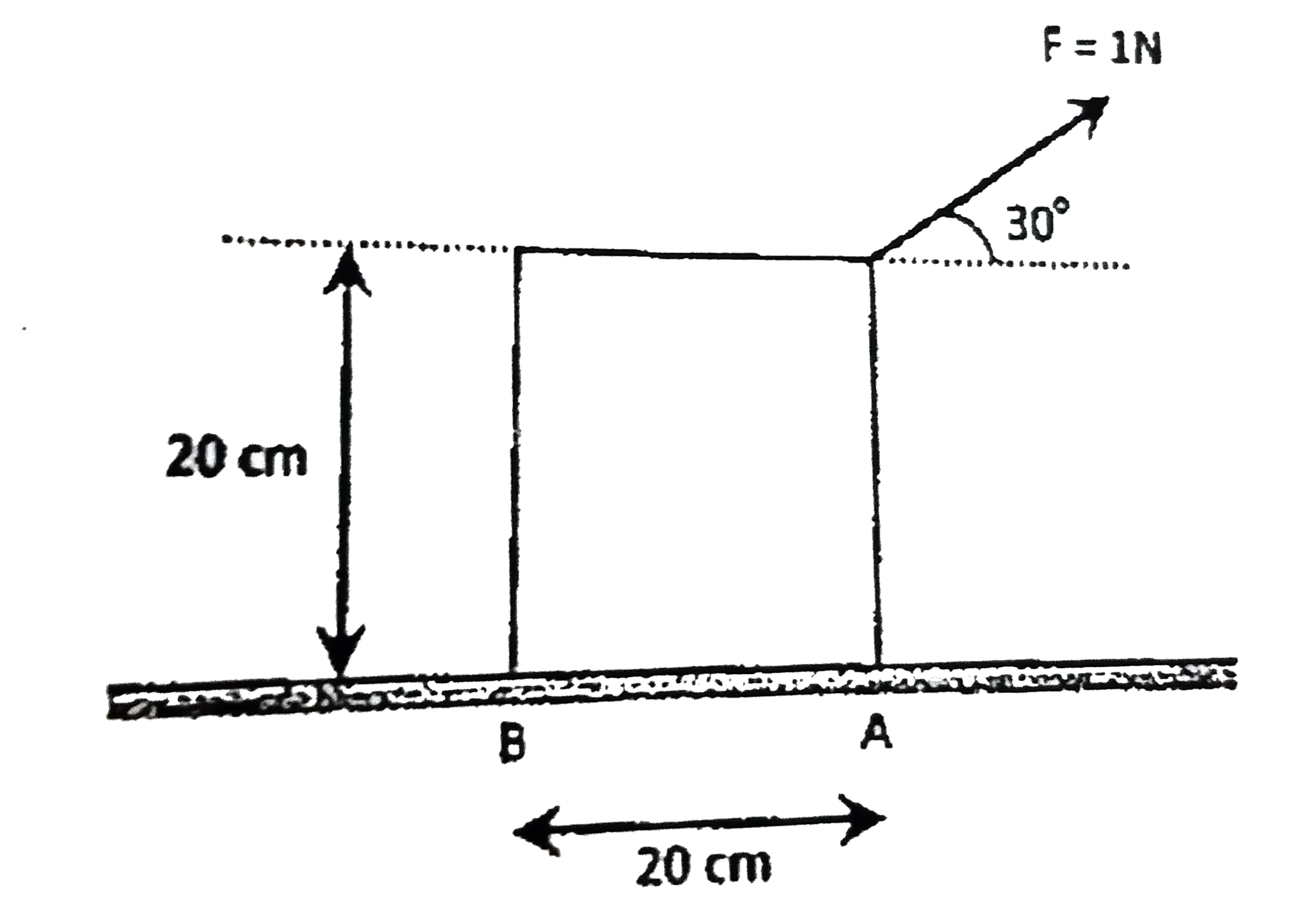 View Solution
View SolutionA 10 kg block is connected to a 40 kg block as shown in the figure. The surface on that the blocks slide is frictionless. A force of 50 N pulls the blocks to the right.

What is the magnitude of the acceleration of the 40 kg block ?View SolutionA 10 kg block is connected to a 40 kg block as shown in the figure. The surface on that the blocks slide is frictionless. A force of 50 N pulls the blocks to the right.

What is the magnitude of the tension T in the rope that connects the two blocks?View SolutionA block of mass √3/10kg is placed on a rough horizontal surface as shown in the figure. A force of 1N is applied at one end of the block and the block remains stationary. The normal force exerted by the sruface on the block acts(g=10m/s2)
 View Solution
View Solution

